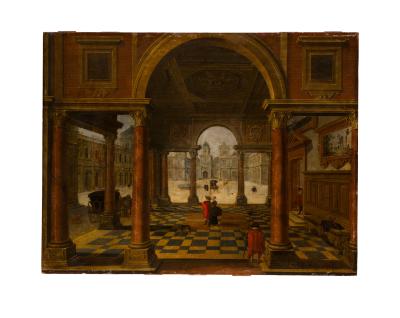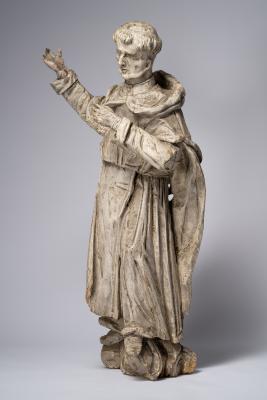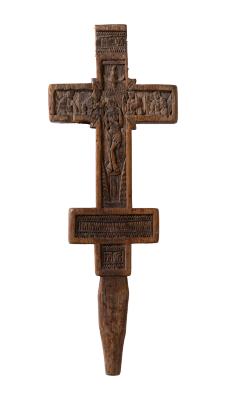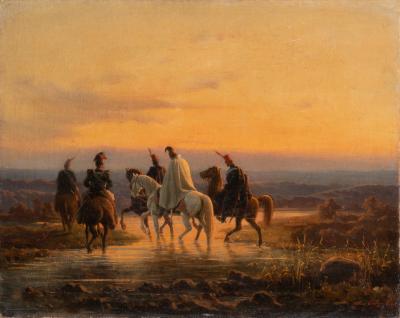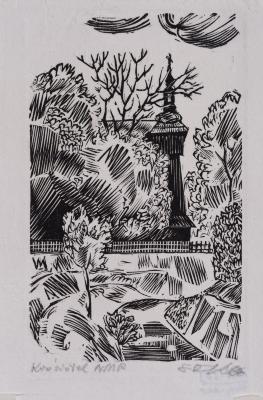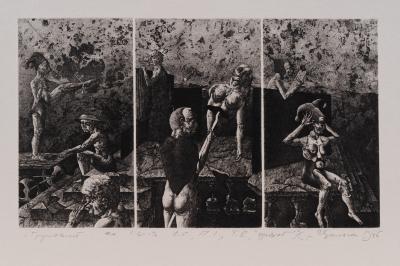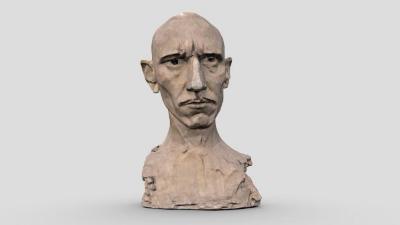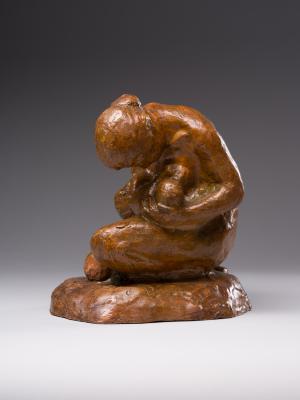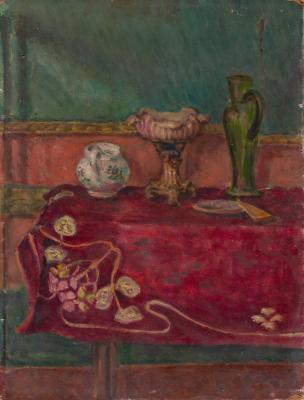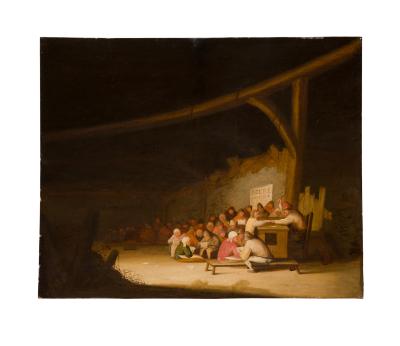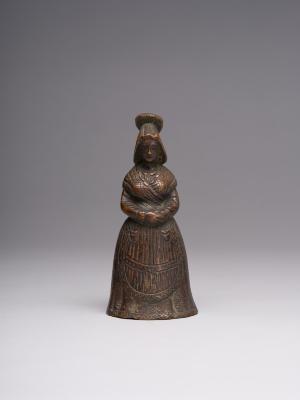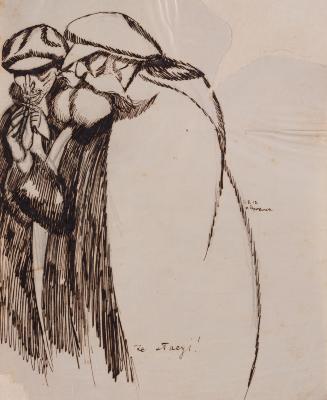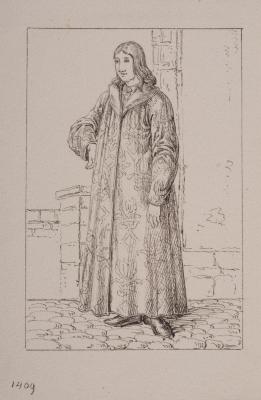Against the background of a green hilly field on the left, there is a bust-length image of an elderly man depicted full face, with a moustache and combed back hair. This is a portrait of Michal Sozanski, a Polish artist and watercolourist. From 1890, he lived in Lviv; before that time – in Florence. In June 1907, he painted landscapes around Yaremche. He was a student of Leonardo Marconi. On the right-hand side of the painting, under a hill on the road, one can see a rider with long dark red wings; he may be a Polish "winged hussar" that symbolizes the origin of the portrayed person, or Bellerophon riding a Pegasus horse. Being the deadliest cavalry, the Polish "winged hussars", about whom legends were composed, were engaged in European wars. Hussars wore armour and pelts; in particular, noblemen wore leopard pelts, and the less noble horsemen – wolf, lynx, or bear ones. These soldiers were distinguished by their "wings", a wooden frame carrying eagle, ostrich, swan or goose feathers. The most common theory is that the hussars wore the wings because they made a loud, clattering noise, which made it seem like the cavalry was much larger than in reality and frightened the enemy's horses. The wings were mainly used to block the back of the rider from swords or protect them from getting thrown off their horse.






